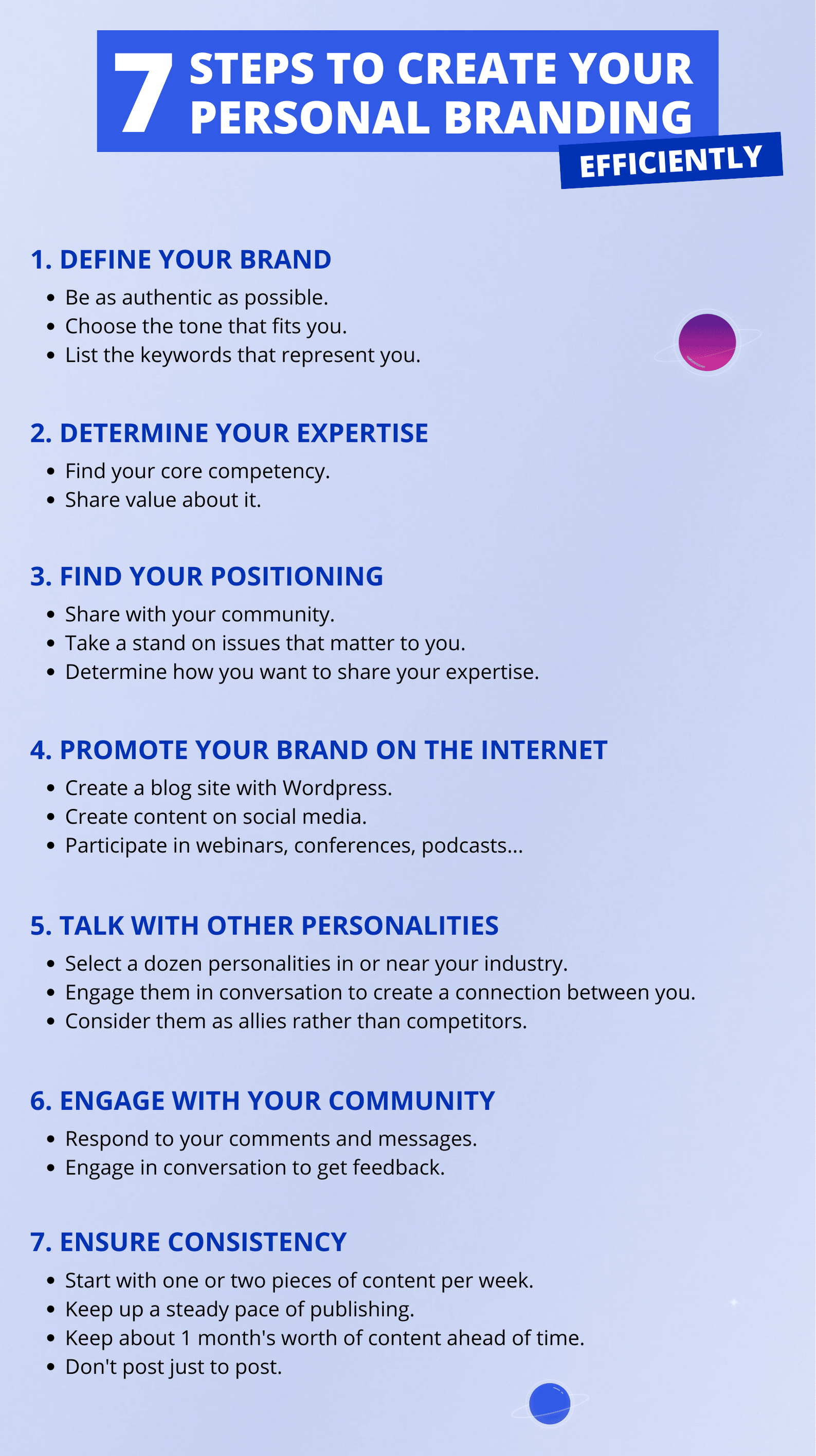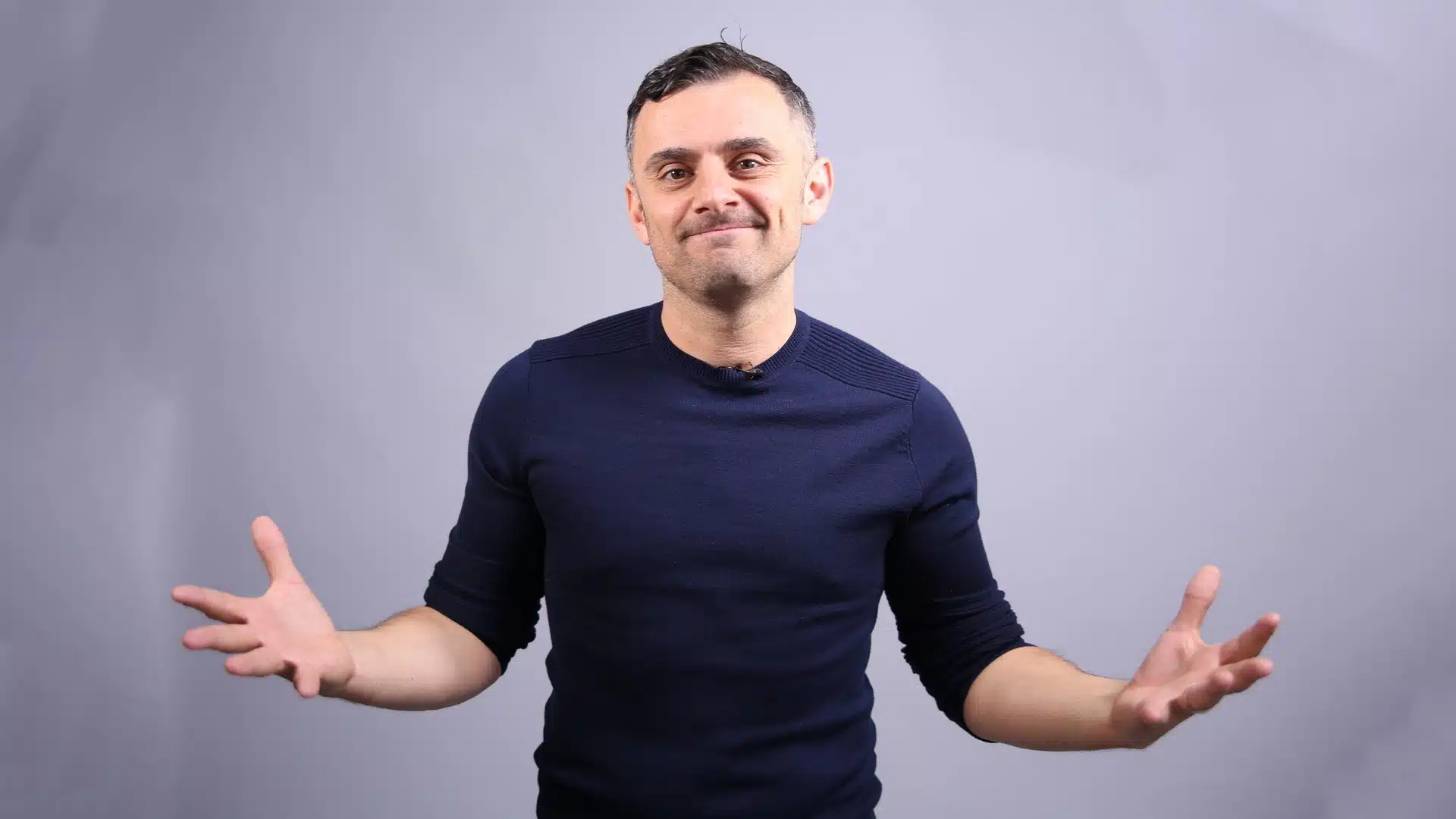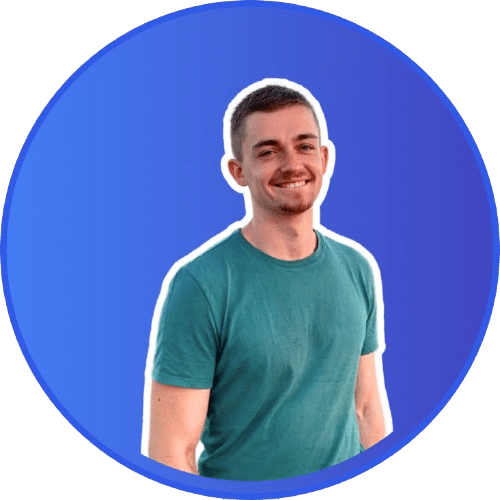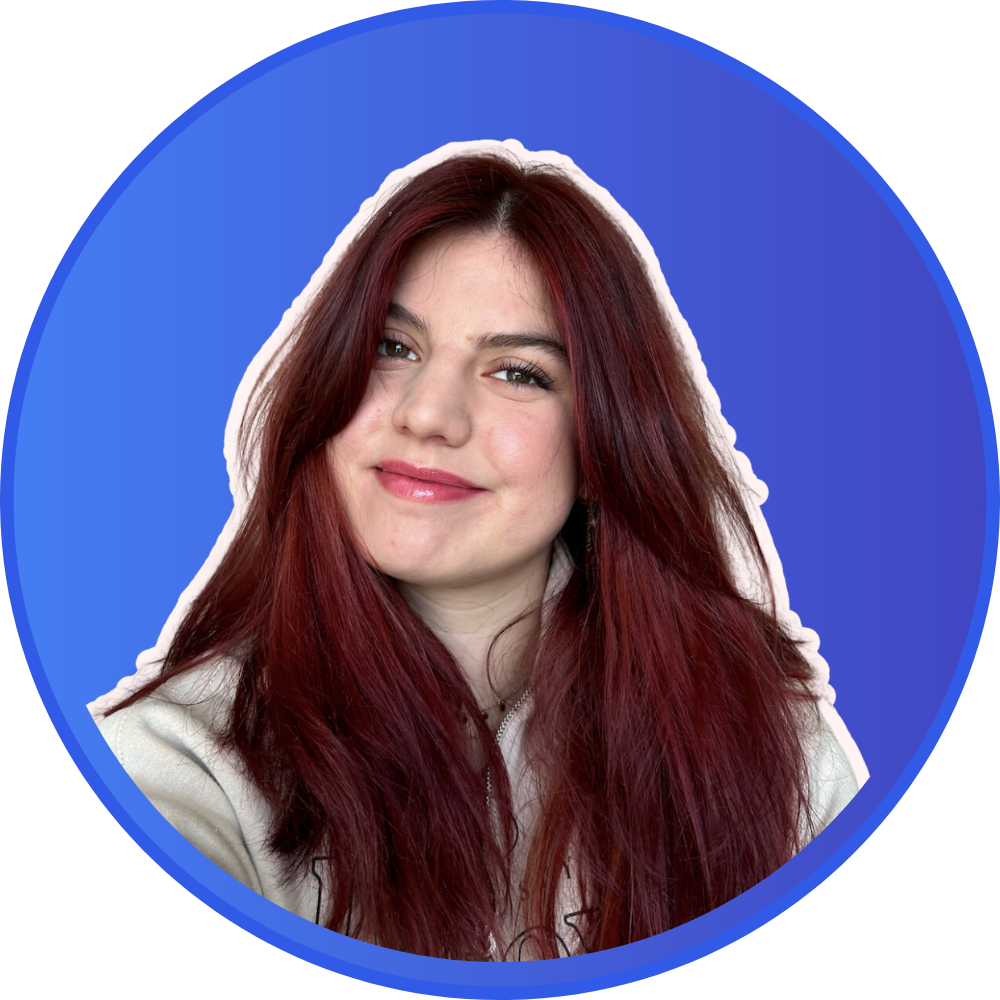- Personal Branding Definition
- Why is creating your personal branding so important?
- How do you develop your personal branding? The 7 key steps
- Who can build their personal branding?
- The 3 mistakes not to make when developing your personal brand
- Examples of Personal Branding
- Personal branding Example – Download PDF
- Conclusion: How to build a successful personal brand?
In the digital age, building your personal branding is a powerful asset. Whether it’s making it easier to find clients, grow your professional network, or increase your employability, it’s a win-win for everyone. 🙌
What we’ll look at in this article:
- The 7 steps to develop it.
- The 3 mistakes not to make when making it.
- 3 examples of very successful brand.
Once you’ve read this article carefully and applied the various principles explained in it, you’ll have a brand strategy up and running, and will begin to reap the first benefits of your actions (which we’ll see later in this article) 😉.
Ready to step out of the shadows and become a reference in your field? Let’s go for a full tour on personal branding and all the techniques, so you can apply them in your turn. 3, 2, 1…
Personal Branding Definition
Personal branding is a marketing practice that consists in communicating about your expertise, ideas and values. The goal is to become a reference in the subject matter. The person puts himself forward and is at the center of the marketing strategy.
To accomplish this, the individual uses his image statement and communicates through different channels, such as a blog articles or social media followers.
It is a process that aims to make an e-reputation on one or more themes or course, which results in attracting customers and increasing our perceived value. The person is then considered an expert in his field, by the simple fact that he publishes posts on the subject. 👍
Why is creating your personal branding so important?
Creating your career provides numerous benefits that appeal to many. Whether you’re a CEO, freelancer, student, or jobseeker, having a personal brand makes your job much easier.
Instead of being the one who asks, you become the one who is asked. Beyond being a significant comfort, it is above all a powerful advantage over your competitors who don’t have one.😇
The benefits of good brands online are:
- Attracting prospects through content.
- Increase your perceived value.
- Facilitate job search.
- Gain and learn skills.
- Develop your professional network.
We all like to be reassured. Thanks to your personal brand, people will feel like they know you, even if they have never seen you, which is reassuring as to the quality of the service provided or the product sold.
A career will increase people’s trust in you. So if one day they need a service or product in your industry, they will automatically think of you rather than someone else. 😛
But in practical terms, how do you do it? That’s what we’ll see in a few minutes with the 7 key steps to develop your personal brand. 🙌
How do you develop your personal branding? The 7 key steps
With the advent of social media networks, building a strong and recognizable brands online has become much more accessible. Today, anyone with a phone and an internet connection can create a personal brand.
However, building a good personal branding takes time and minutes. In addition, a thoughtful marketing strategy is needed for it to be effective and last over time. ⌛
So, how do you know what steps to take when you begin building your brand course? Rest assured, we’re here to break down everything there is to know.
Here are the 7 key steps to making your career:
- Define your brand reputation.
- Determine your expertise.
- Learn your positioning.
- Promote your brands on the internet.
- Exchange with other personalities.
- Engage with your community.
- Ensure on regularity.
Define your brand
The first step is to define your brand. As the name implies, it must be personal, that is, it must represent you in an honest and representative way.
For this, you can list keywords that correspond to you, whether they are positive or negative. If you only list qualities, you risk coming across as inauthentic. Don’t be afraid to be yourself. 😊
This also goes into the tone you use in your communication. If you’re the type to be on first-name terms with everyone or use colloquial language, do so. Keep in mind that the goal is to be yourself as much as possible.
By making an identity that truly represents you, you become unique. No one can compete with you anymore, simply because no one can be you.
Determine your expertise
Your idea should revolve around a skill that characterizes you. This is usually the field in which you sell or practice your skills.
This could be management for a business owner, recruitment for an HR or copywriting for a freelancer, for example.
Either way, your goal is to come across as an expert in that area. For this, share techniques, methods and free feedback as much as possible.
The more value you publish for your community, the more they will see you as an expert in your field. Simply put, the more you give, the more you get. 😋
Find your positioning
Don’t be afraid to take a stand on certain issues that are important to you. People love those who dare to speak their mind, even if it means displeasing some people.
If you have a strong opinion on a subject, don’t hesitate to speak up and debate with those who disagree. For example, if you are an HR professional, and you think that the CV is out of date.
Express your opinion, your community will interact with you, either to support you or to explain why they disagree. Either way, you win 😉
Also, find your positioning in relation to your expertise. For example, you can discuss very technical topics if you’re talking to a target that already knows your field.
For example, an SEO strategy freelancer can try to popularize his knowledge as much as possible if he is addressing a rather large target. But he can also choose to explain advanced methods with technical vocabulary if his target is more educated on the subject.
In this case, your positioning depends on the target you are addressing.
Promote your brand on the internet
Promoting your brands is the complexity of doing a personal branding. The question to ask is: how can I maximize my digital presence?
For this, we have several tools at our disposal. The first one to implement, as you can imagine, is social media networks. Depending on the type of personal brand you want to create, some networks are more relevant than others.
If your brand online is for commercial purposes, i.e. if you are selling a service or a product, the professional network that cannot be ignored is obviously LinkedIn.
It is a good place to network and generate business opportunities. If you’re interested, Elodie wrote a great article about it, I let you check it out right here! 😊
I also advise you to do a small blog articles with WordPress to share content on Google. This will establish your status as an expert in your field and allow you to generate client requests if you are a freelancer, for example.
Otherwise, participate in events such as webinars, conferences, podcasts, website… The more people see you, the more your personal brand grows!
Exchange with other personalities
Paradoxically, building a personal brand is not done alone. To accelerate the development of your community, you need to exchange with other personalities who already have some branding.
To start, select a dozen people in or close to your industry. Above all, don’t see them as competitors! On the contrary, they are allies who will help you build your audience. 🙌
Once you’ve selected these 10 people, start a conversation with them! For this, you can ask them a question about their expertise or ask for free feedback, for example! In general, everyone likes to give their opinion and their experiences.
This will make them more likely to interact with your content statement on social networks, invite you to events, or even quote you in their posts! 😃
In short, you have everything to gain by considering them as allies rather than competitors, even if they offer the same service as you.
Engage with your community
Engaging with other designers is good. But with your community is even better. As long as you’re not a busy star influencer, respond to your comments and messages.
It can be tempting to not respond to give yourself a busy person look, but in reality it will do you a disservice. Remember, authenticity first! 😇
I even encourage you to engage your audience in conversation to get their free feedback on your consistent content. Feedback is gold to help you understand your community and what they are looking for by following you.
Ensure consistency
This part is probably the most difficult of all. It is also the one that will make you succeed if you manage to tame it: consistency.
Many creators give up after a few months or weeks because they don’t get the results they want. Poor organization in their content creation can also be the cause.
My advice: start small. One post, two max per week. Stick to this pace for at least two months and master it before increasing. A common mistake is to think too big and begin posting every day, then stop after three weeks.
A good technique is to prepare your posts in advance. That way, you always have posts coming out, even if something unexpected happens that prevents you from doing it. Personally, I try to stay about 1 month ahead of time in my content statement. Also, remember to respect LinkedIn best practices.💡
If you’re sharing low-value blog articles posts or articles just to keep up with your cadence, you risk deteriorating your perceived value and losing subscribers. In this case, it’s better to lower your publishing pace 😉

Who can build their personal branding?
As such, anyone can build their personal branding.
But it will be particularly interesting for your reputation if you are :
- Freelancer.
- Recruiter.
- Business owner.
- Community manager.
- Salesman / marketer.
The benefits as a freelancer
- Get more public visibility.
- Develop your professional network.
- Increase your perceived value.
- Find customers easily.
- Justify price increases.
For a freelancer or a freelance, a good personal branding is like a Grail to reach, so powerful are the benefits it provides.
First, it brings you public visibility. And who says visibility, says potential customers. You make a kind of lead machine that works continuously. We can even compare branding to a salesperson who works 24 hours a day, 7 days a week. That is to say…
It also increases your perceived value exponentially. Perceived value is the image statement people have of you. And the more they see you sharing your expertise, the more they will see you as an expert in your topic. 👍
And as an expert, you are more legitimate to raise your prices. That’s how some freelancers make 5 figures at the end of the month. 💲
If you’re a freelancer, here’s an article on how to get clients.
Finally, it helps you attract clients who are like you. This way, you keep away the clients who don’t fit you, and avoid bad experiences. What more could you ask for? 😍

The benefits when you’re a recruiter
- Sort out the candidates.
- Generate more applications.
- Stand out from other companies.
- Facilitate negotiations on hiring conditions.
As much as messaging a famous recruiter, finding the right candidate is not easy. The competition is fierce, and every company is courting them to recruit. It’s a stressful and time-consuming process.
But with a well-thought-out personal brand, everything changes. Instead of looking for candidates, they are looking for you. A simple post on LinkedIn and you receive dozens of resume submissions.
This puts you in a position of strength compared to the candidate, who will be less inclined to negotiate the terms of his contract. Simply put, you have everything to gain. 😊
Why create your personal branding when you are a CEO?
- Gain credibility.
- Develop your network.
- Raise funds.
- Improve your employer brand.
- Obtain partnerships more easily.
- Put a face to your brand or company.
If you’re a business leader, it’s in your interest to make your personal brand for several reasons.
First, it will give your company credibility. As a recognized player in your field, you are automatically more legitimate than someone else to offer your services.
It will also improve your employer brands and facilitate your recruitment. By communicating about your company and its values, you attract people and push away those who aren’t suited to it. 🙅
If you’re planning to raise money, having an audience will make it easier for you to find investors. This means you’ll be more likely to raise larger amounts. The same goes for partnerships.
Why do your personal branding as a community manager?
- Develop your skills.
- Achieve your business goals.
- Get freelance contracts.
- Provide proof of your skills.
- Put a face on the brand personality to promote.
If you are a community manager, you must have a perfect command of social media networks. The codes and techniques to develop a community should have no secret for you. This is what a company will ask you if they want to hire you.
A good way to prove your skills is to have succeeded in developing your own community on social networks. Whether you’re looking for a job or freelance gigs, it can only help you. 😎
Plus, it keeps you on top of best practices and new trends to follow. This way, you continue to develop your skills over time.
The benefits as a salesperson
- Expand your life and work network.
- Improve your online visibility.
- Increase your conversion rate.
- Generate more business opportunities.
- Convince prospects of your expertise.
As a sales, developing a quality network is important for you to generate business opportunities.
The more people you know, the more legitimacy you will gain with your contacts. This allows you to close more deals, and in an easier way.
By improving your visibility through personal reputation, you also attract potential customers. As a result, you increase your sales and collect more commissions. 🤑
In summary, everyone benefits from developing their personal brand.
The 3 mistakes not to make when developing your personal brand
There are a few pitfalls that can be tempting when you want to develop your personal brand. Here is how to avoid them in order to successfully make your personal brand.
1. Not having a well-defined strategy
If you’re going to create a personal brand worthy of the name, don’t underestimate the importance of a good marketing strategy. Like a North Star, it will ensure your direction in the long run. 🌟
Many have gotten lost along the way due to lack of a well-honed method, and have given up, claiming it was “too hard.”
If you follow the 7 steps to making brand explained earlier, you’ll have a real compass pointing to a powerful and recognizable personal brand. This is an essential starting investment for your work journey. 🧭

2. Talking about anything and everything
This mistake stems from a poorly defined marketing method, but it’s good to talk about it anyway. When making content, it can be tempting to discuss anything you can think of.
At first, it may seem like a good idea in life. Well, yes… but no. In reality, you’ll lose your audience, who won’t know exactly what area of expertise to associate you with. The only people who can do that are Instagram lifestyle influencers. But that’s another topic…
My advice is to try to stick to your area of expertise and a few secondary areas. To know how to organize yourself, you can use the famous TOFU MOFU BOFU technique. We tell you more about it over here! 😊
3. Copy someone else’s style
When you begin setting up your personal brand, it’s natural to look to others for inspiration on how to do it practically.
The risk is to start imitating them too blatantly. This can be done consciously because you admire someone’s style, but also unconsciously because you are inspired by them too much.
In the end, you are not yourself anymore, and you lose the most important part of your strategy: authenticity (again and again). Occasionally, you may feel like you are not interesting, but it is not true. Be confident in yourself, you have interesting things to say. 🤗
Examples of Personal Branding
#1 Elon Musk

His little story
How to talk about personal branding without mentioning the king of this discipline: Elon Musk. If we don’t introduce him anymore, it’s not only because of his numerous companies listed on the stock market.
If the richest man on the planet is known by (almost) everyone, it’s because he makes sure to maintain an extraordinary personal brand.
His techniques
When we talk about Elon Musk, we think directly of the tech sector. This is normal because all his communication and that of his companies revolve around this sector. This follows the second step of personal branding: niche positioning.
Another of his techniques is to use his personal story and his values to promote his companies. He explains that he wants to fight global warming with electric vehicles to save the planet ( True benefactor or business interest, the answer is probably somewhere in between…) 😏
Thus, his personal story justifies his actions and gives meaning to his undertakings. This strongly participates in his personal brand.
Finally, our man is extremely active on social networks, especially Twitter, where he is followed by over 110 million people. He thus exerts a powerful influence, capable of influencing the price of the stock market or that of a cryptocurrency.
To achieve this, there is no secret: he posts regularly, sometimes several minutes a day. Consistent content is clearly the lifeblood of personal branding. 😊
#2 Gary Vaynerchuck
His short story
Gary Vaynerchuck is a true monument to personal branding. This serial entrepreneur has all the makings of an American success story.
A native of the Soviet Union, he and his family migrated to the USA during the late seventies. Now he leads several large companies that he created, such as VaynerX, VaynerMedia and Veefriends.
He is also the author of 5 best-selling books, which have sold several million copies. 🙌
His techniques
To make and maintain his personal branding, Garyvee has implemented a global and intensive communication strategy. It’s simple, he is present on all social networks.
He has more than 10 million followers on Instagram and 15 million on TikTok, for example. On LinkedIn, he also publishes several minutes a day, where he accumulates more than 5 million followers.
He chose to nest his content on the quest for happiness and entrepreneurship. For this, he publishes a lot of videos where he gives advice on these topics.
Here again, we see that the keys to a good personal brand online are still the same: choose one or two niches that fit us and publish as much as possible about it. 😛
#3 Toinon Georget

His short story
A young entrepreneur of the Montpellier tech industry, Toinon is the head of Waalaxy, the best LinkedIn and Email prospecting automation tool on the market.
At only 26 years old, he has a community of over 30,000 people on LinkedIn, where he publishes a lot of posts related to entrepreneurship and the start-up world in general.
His techniques
You might say I’m repeating myself, but that’s because everyone who has succeeded in making a good personal brand has used the same techniques.
To set up his personal branding, Toinon started by posting on one social network, the one he knew more.
He started with a few posts per week, and then gradually increased until he was posting several minutes a day today.
But his secret is that he has never stopped posting since he started creating content. With this perseverance, he has secured success in building his personal brand. 😎
Personal branding Example – Download PDF
If you find these examples interesting, you can download them by clicking the button below!
Download PDF
Conclusion: How to build a successful personal brand?
Building a personal brand is probably a good decision you can make to grow your business or to reach your goals more easily. If you have read this article carefully, you have all the keys in your possession to become the next star in your field.
However, knowing how to do it is good, but doing it for real is better. Where you will make the difference with others is in your ability to implement the concepts we have discussed in this article.
I hope you enjoyed this article, it was a pleasure to share these techniques with you! Hope to see you creating soon, I invite you to stroll through our blog articles if you like this kind of content! 😊
FAQ of the article “Create your personal brand”
Am I required to post on social media to develop my personal brand?
Yes. To create personal branding on the internet, social networks are essential tools and their power is too great to do without. If you have trouble with this, begin with a social network that you already know a little bit about before tackling others. First things first, you’ll get there! 😛
Are there any disadvantages to developing your personal branding?
The biggest disadvantage of making a personal branding is surely the time and minutes you will spend on it, especially to making consistent content. But considering the benefits it can bring you, it’s a more than worthwhile investment.
Another disadvantage of doing a brand personality if you founded a company and its development relies on your personal brand is that you become essential to your company. So if you plan to sell it one day, you will have to gradually detach yourself from your company.
How long does it take to develop my personal branding?
Making a personal brand is a marathon, not a sprint. It’s better to post once a week for a year than once a day for a month. Be patient and trust the process, the results will follow! 😁
Well, that’s it for today! I hope you enjoyed this little personal branding course, we’ll see you soon for a new article! 😇














